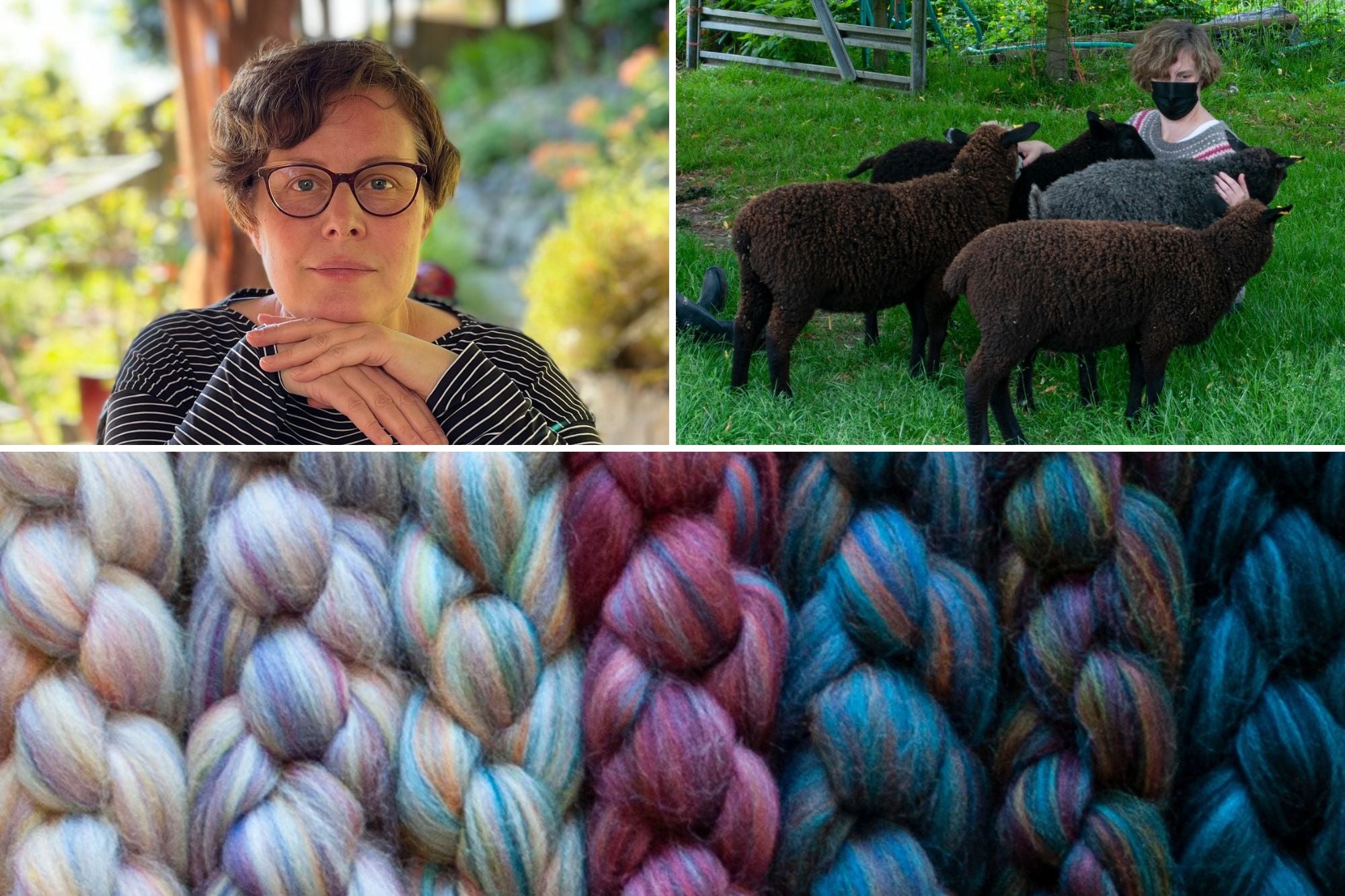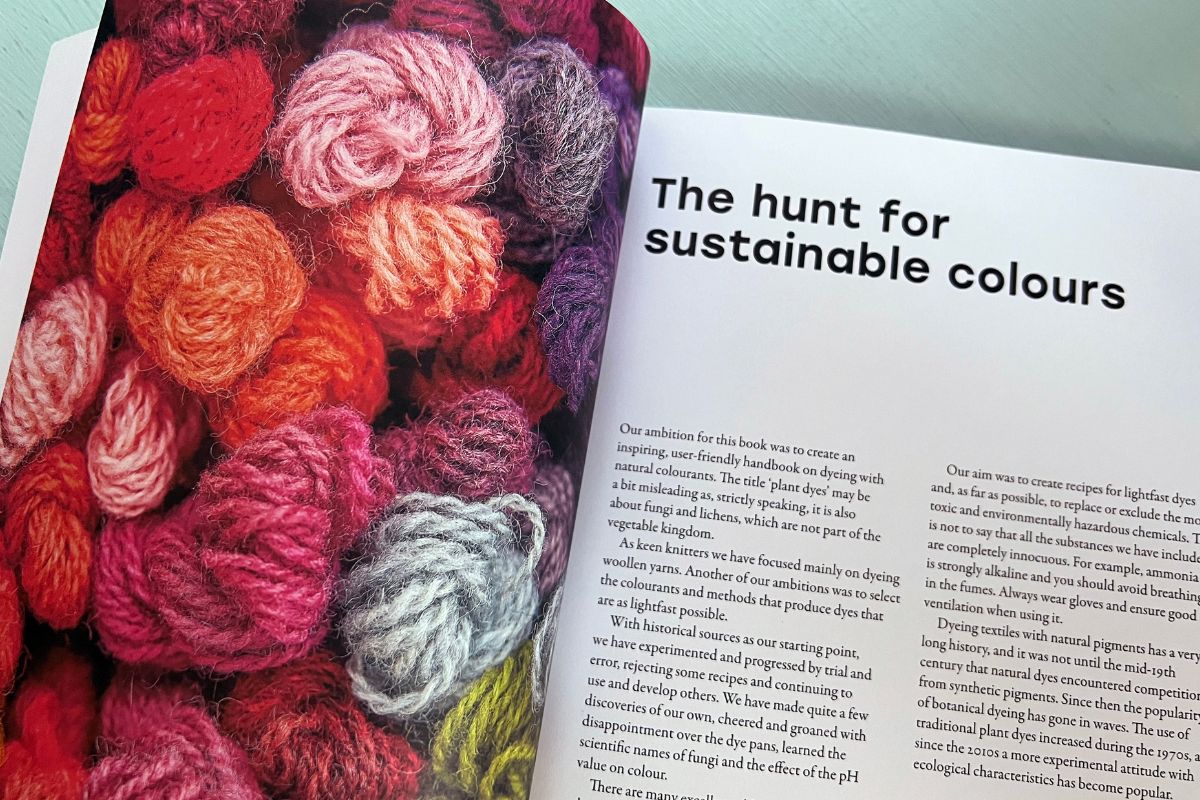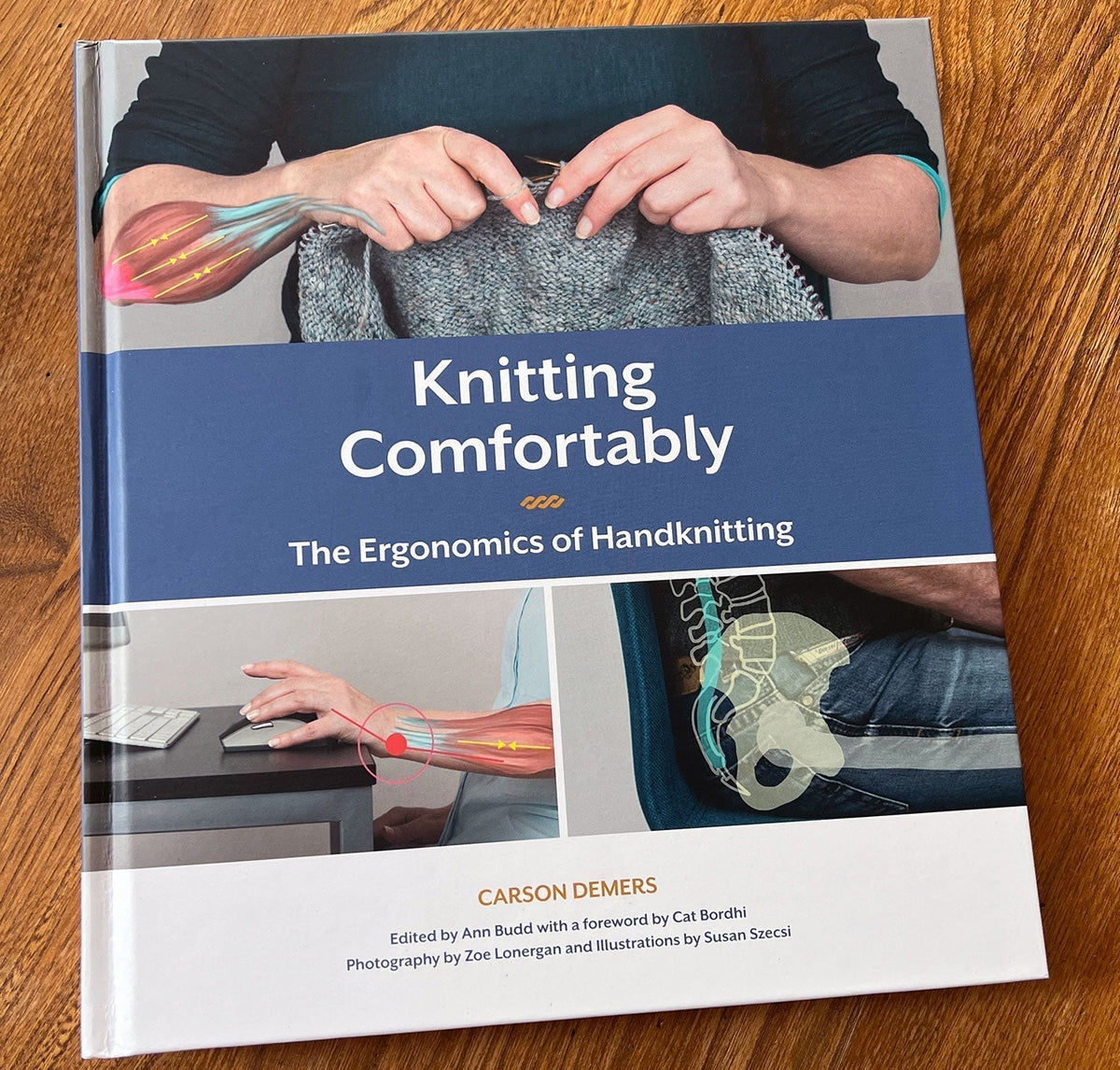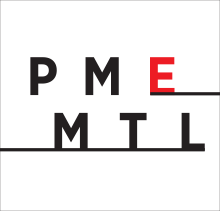Getting to know Catherine from The Small Bird Workshop

We first met Catherine Knutsson, our collaborator on the Beyond Merino yarn club, when she organized the Great Canadian Wool-Along last summer as a way to celebrate crafting with local materials and supporting Canadian wool farmers. We loved the concept of the wool-along, and jumped at the chance to connect with a community of Canadian wool-lovers.
As we got to know Catherine better it became clear that her passion and knowledge really dove-tailed well with our own values and goals for our business. We'd been toying with the idea of starting a yarn club, but weren't sure we'd have the time and expertise to source the types of yarn that we wanted to work with. Since sourcing ethical and traceable wool is Catherine's specialty we invited her to team up with us, and we're so glad she said yes!
It's been a joy to work with Catherine, and we asked her to answer a few questions about herself and her business, so you can have the pleasure of getting to know her better too! If you're intrigued by her work you can find her beautiful yarns and fibres online at www.smallbirdworkshop.com. (She's currently moving her home and business, so there aren't many listings up at the moment, but they'll be back mid-February).
When or how did you first fall in love with wool?
When I was very, very young – someone came to my preschool and taught us how to card wool. I was about four, and if I had to pick one moment in my life to point to as the start, well, that would be it!
What inspired you to start The Small Bird Workshop?
I initially set out to design knitting patterns because I couldn’t find what I wanted to knit, but I realized pretty quickly that I had gaps in my knowledge and couldn’t find anyone to answer them. In particular, I wanted to understand why certain wools behaved the way they did, and why certain yarns behaved the way they did. These days, there’s a lot more information out there, but even five years ago, it was hard to find answers to my questions. So, I learned to spin, and then discovered that many of our local shepherds were either burning or sending their wool to the landfill. That was when the real heart of the Small Bird Workshop came into being!

What is the focus of your business, and why?
At the moment, the focus of the Small Bird Workshop is a few different things. I’m not only passionate about wool, but also good husbandry and good environmental standards, traceability that means something tangible and isn’t just performative, and preserving the genetics of endangered and heritage breed sheep. So, I’m working hard to build a thriving wool system in Canada, as well as working to support wool systems who are already doing great work. My aim, long term, is to stock 100% Canadian wool, but....that goal is a ways off!
Education and community, however, are at the heart of all I do. I have been a working classical musician in one form or another for a good portion of my life, and working collaboratively is just what classical musicians do – there’s no other way to do it, even if one is a soloist. Providing crafters with the knowledge to inform and deepen their practice, or, at least, give them a springboard to jump in from, serves both me (because there’s no better way to learn something than to teach) and Canadian wool, so it’s a circle of wooly goodness!
How did you get started working with farmers and mills?
By jumping in the deep end! I purchased my first clip (a clip is all the fleeces from a shearing) in 2019 from a local farmer who raised Babydoll Southdowns and had just been garbaging his fleeces. Then, I happened to meet Nicole of That Darn Yarn mill at the 2019 Knit City. She said she could process it for me, and that was that! From there, I just spent a lot of time researching mills and farms, calling them up, emailing them, and learning on the fly. I’ve made some mistakes along the way, but those have been good learning opportunities, too. And, my experience as a handspinner really helped – I knew what I wanted to do with the wool. And although my ideas weren’t always the best use, between Nicole at That Darn Yarn mill and Donna at Wellington Fibres, and a whole bunch of reading and listening and learning from anything I could get my hands on, it was all trial and error, rinse and repeat!

Do you think it's valuable to diversify the types of wool available to crafters? And if yes, why?
Absolutely. We have about sixty breeds of sheep in Canada, and all of them are good for something. However, the challenge is to help crafters discover what the wool from each breed is good for, and to make choices that bring out those great qualities. For example, longwools are strong, have great drape, make excellent lace, and have a wonderful natural lustre – they’re a dream to dye! But, most people wouldn’t be happy if they made a cowl from a longwool – it would be too strong and would likely irritate the sensitive skin on most people’s neck. But, a lace shawl, work socks, warp yarn, or an outerwear sweater or jacket? Those would be great choices, and the longwool would stand up to wear and tear in a way that a finer wool can’t.
The other reason is biodiversity. Many of our modern breeds have been developed from longwools, which are among the most endangered sheep breeds because they’re slow growing and large. Their wool tends to be stronger, and isn’t as “friendly” to someone who has never used a heritage breed wool before. But, without longwools, we wouldn’t have many of our modern breeds, and because their numbers are so low, one bout of disease could wipe out their population. But these heritage breeds are incredibly hardy and strong, and are important to ensure the vitality and hardiness of modern breeds – without them, any breed of sheep runs the risk of developing genetic issues or susceptibilities to disease or parasites, and the ability to cross-breed to these less-fashionable sheep is one way to ensure the health of the entire sheep population.
One way to ensure their survival is to use their wool. After all, wool is what they were developed for, and the cathedrals of medieval Britain were built from the wealth generated by these beautiful heritage breed sheep!
What do you look for when you're connecting with a new potential yarn source?
A variety of things, but ethics, traceability, responsible wool handling and sheep husbandry, and good milling are some of the most important things. It also helps if the shepherd or supplier is friendly and communicative. I also tend to look for sources that are a bit beyond the known – there are a lot of people doing great work out there, but many of them are quiet or prefer not to use social media. They can be harder to find, but I enjoy research and if there’s good wool to be had, I’ll find it!

Why did you choose to source some of the yarns for the Beyond Merino Yarn Club from outside Canada? What are some of the challenges working with Canadian wool sources?
The Canadian wool system isn’t as robust as it once was, which means we don’t have many mills, and most of those that I’m able to access are small. That, in turn, means costs are high and turnaround times (the amount of time between delivering fleeces to receiving the finished product) are long – as in, well over a year in most cases. That makes it really difficult to source Canadian yarns at a price that allows for wholesaling or for collaborative projects – the margins just aren’t there. And, since I never know when a mill order will be done, trying to plan for a club model was just not feasible. Most of our Canadian mills are run by small crews – often, just one person – and if the mill has to stop production due to illness or some other unforeseen eventuality, the entire production schedule gets mucked up (ask me how I know...). Because we want to ensure club members received their subscriptions in a timely manner, it just seemed like a good choice to use sources that could supply the product we needed, at the price we needed, when we needed it.
The other factor is that we don’t have a wide range of fine wool sheep breeds in Canada, and although this club won’t feature exclusively fine wool breeds, we wanted to make sure there were some “friendly” wools in the mix. An example is Cormo, which is my favourite fine wool – at the moment, we don’t have any Cormo sheep in Canada (at least, I’m not aware of any). And although there are Cormos in the US, there still aren’t a lot of them and yarns made from their wool tend to be expensive because it’s just that good!
So, for some of the wools we looked a little farther afield, to places like the UK and the Falkland Islands. The good news about that is that Falkland sheep are raised with some of the best husbandry and land management practices in the world, and since the wool is shipped by sea, the carbon footprint is remarkably low – far lower than shipping yarn by air across Canada!
What can we learn here in Canada from the industry in other places like the Falklands?
I think the biggest thing is that diversity and collaboration build a robust wool system – not just diversity in sheep breeds, but in types of mills, in milling systems (woolen versus worsted), in co-ops, in husbandry systems, and in land management.
Canada is a huge country with incredible diversity in ecosystems, so a one-fits-all wool system just isn’t going to work. The reason the Falkland Islands’ system works so well is that they’re a small region with a relatively uniform environment, and they don’t have things like blizzards, cougars, grizzlies, or Vancouver Island mud to deal with. But, what Canada can learn from a system like the Falkland Islands is that collaboration and recognizing their “zone of genius” can build something quite special.
Falkland Islands wool isn’t milled on the islands – it’s shipped to Great Britain, where they have the infrastructure and the water to sustain the mills and scouring facilities (both of which use a lot of water). But, because of the quality of their wool and by working together to market their wool to buyers who value quality and excellent animal husbandry, the Falkland Island farmers have developed a system that’s sustainable for the farmers, the sheep, and the land, while allowing others to do others aspects of the work.
A little like what we’re doing with this club....on a much smaller scale!

What do you think we can learn as crafters from working with breed-specific wools?
That good wool is good wool – if the wool is sound and milled well, then it’s up to the crafter to find the right job for it. Not all wools are for all crafts or crafters, and that’s not a failing of the wool. It’s just a creative challenge for the crafter! :)
Do you have a favourite wool to work with?
Romney. Vancouver Island Romney in particular. It comes in a range of natural colours, it’s friendly and easy to spin, the lambs’ wool is good for all but the most sensitive-skinned people, and it gets silkier, shinier, and softer with wear. I knit my very first hand spun sweater from a dark grey Vancouver Island Romney fleece that I purchased from a local shepherd, washed, combed (not carded), spun, and then knit into one of my favourite sweaters. And that sweater, even after five years of frequent and plenty of hard wear, looks just as good as the day it came off the needles!

1 Response
Sherry Stewart
I’m excited to be part of the new wool club
Sherry Stewart
Coniagas Textiles
Leave a comment
Also in News

Choosing a Natural Dye Book
Have you ever tried dyeing your own yarn using natural colorants? Are you now looking for more inspiration? Or maybe you’ve always been curious, and are wondering where to begin. Below, we’ve introduced four books that could be exactly what you’re looking for!

Knitting Comfortably: The Ergonomics of Handknitting
One month ago, I found myself in the emergency room with unbearable back pain. I later learned it was caused by a herniated disc and osteoarthritis (OA) that had taken over my entire lower back. Would I ever be able to dye yarn again, let alone... knit...?




Debbie Sullivan
Author